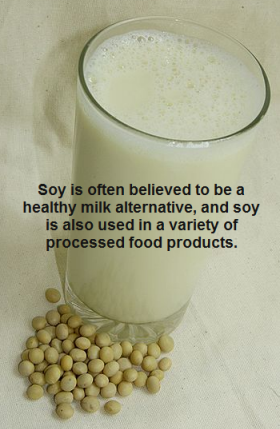- Patient complains of gastric pain, bloating, diarrhea, etc
- Patient visits GI doctor
- GI doctor runs tests including a biopsy
- Biopsy shows villous atrophy
- Patient is told to avoid wheat, barley, and rye
Morphometric and immunohistochemical study of jejunal biopsies from children with intestinal soy allergy.
Abstract
A morphometric and immunohistochemical restudy was made of jejunal biopsy specimens from 5 patients with soy allergy and the results obtained were compared to those from specimens taken before soy feeding and to those at a later time. All the patients had had previous cow's milk allergy with malabsorption. Gastrointestinal symptoms presented within two weeks of starting the soy based formula but in two patients the symptoms were mild and these patients were able to continue soy feeding. Jejunal biopsy specimens taken within 3 days from the reaction to soy showed villous atrophy associated with crypt hyperplasia and an increased cell renewal rate. Also, these specimens showed an inflammatory reaction in the lamina propria and in the epithelium, and the numbers of IgA- and IgM-containing cells were increased. Later, when the soy proteins were eliminated, the morphology of the jejunum improved and the cell numbers were reduced to normal. The intestinal damage and the local immune reaction caused by soy proteins are similar to those seen in cow's milk allergy with malabsorption. The immunological mechanisms operating in these diseases are thought to be the cause of these changes.Source
Eur J Pediatr. 1981 Sep;137(1):63-9.
Soy Can Cause Villous Atrophy
If soy can be a cause of villous atrophy, and other foods (corn, dairy) can cause villous atrophy, how can we use this finding as a definitive marker for the identification of celiac disease? There are a growing number of people diagnosed with celiac disease who are failing to respond to a traditional gluten free diet. Is this one of the reasons why?
Soy is a Major Processed Food Ingredient
This information seriously begs the question: shouldn't doctors also rule out other foods known to cause villous atrophy before making a definitive diagnosis of celiac disease?
Many gluten free food manufacturers use soy flour and other soy byproducts to produce foods for the gluten free market. If a patient is diagnosed with celiac disease and not told about the possibility of soy as a cause, they could be using these products and perpetuating their illness.
If you have not responded to the gluten free diet, you may want to look into the possibility that other food allergens are also playing a role in your disease process. If your doctor won't help you - go here - www.TownCenterWellness.com
Always looking out for you,
Dr. O - AKA the Gluten Free Warrior




Reader Comments
to our Newsletter